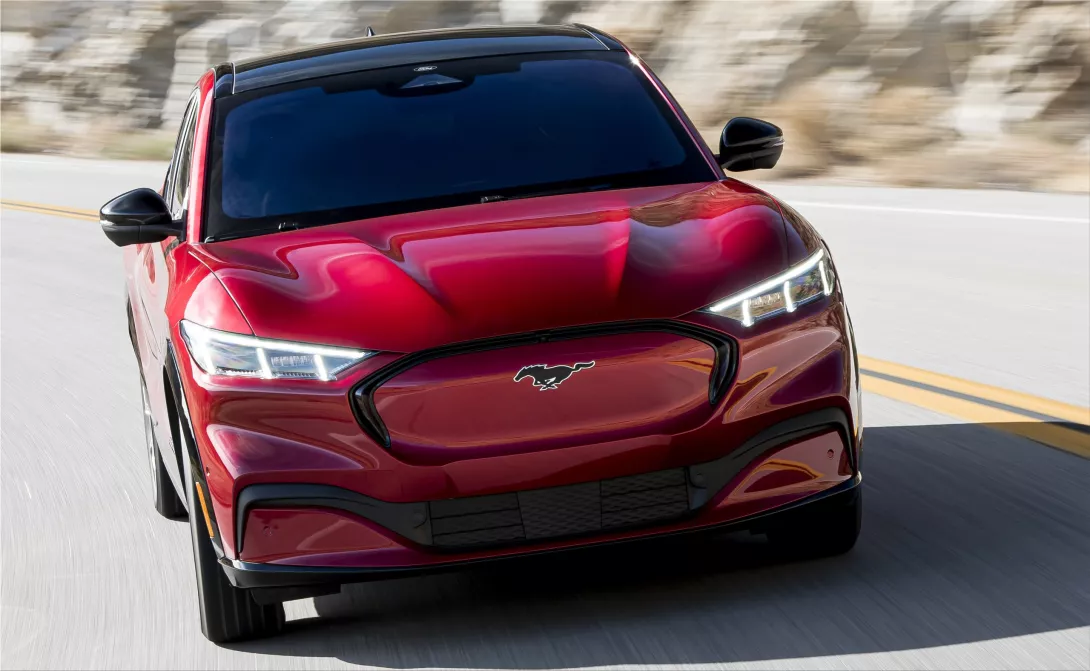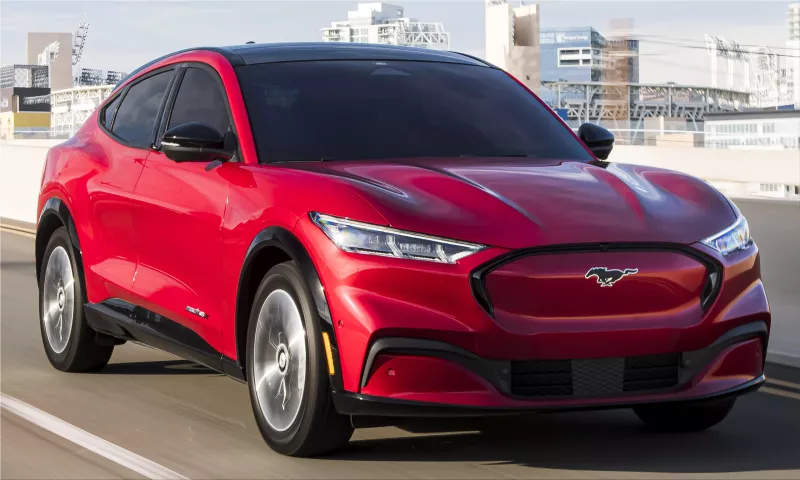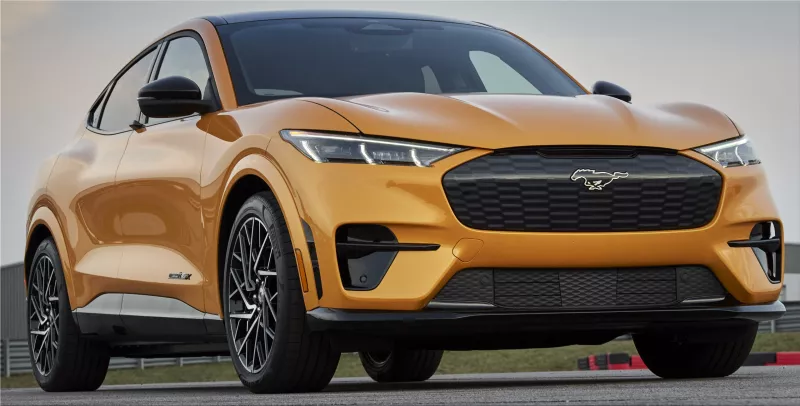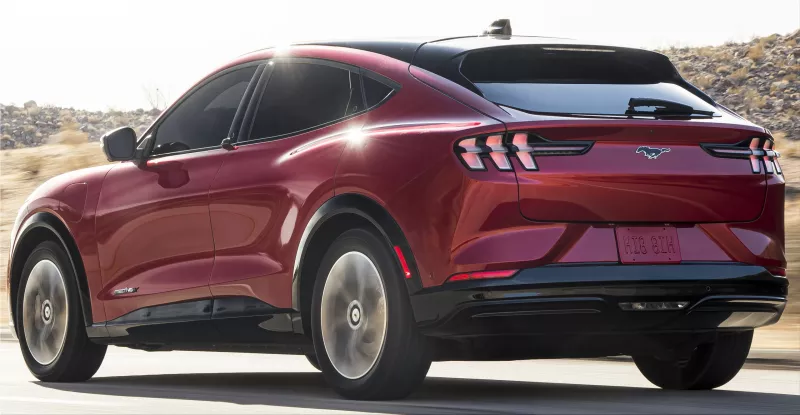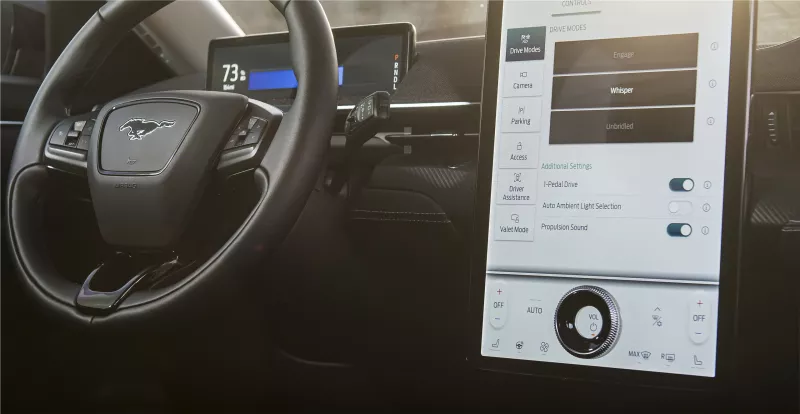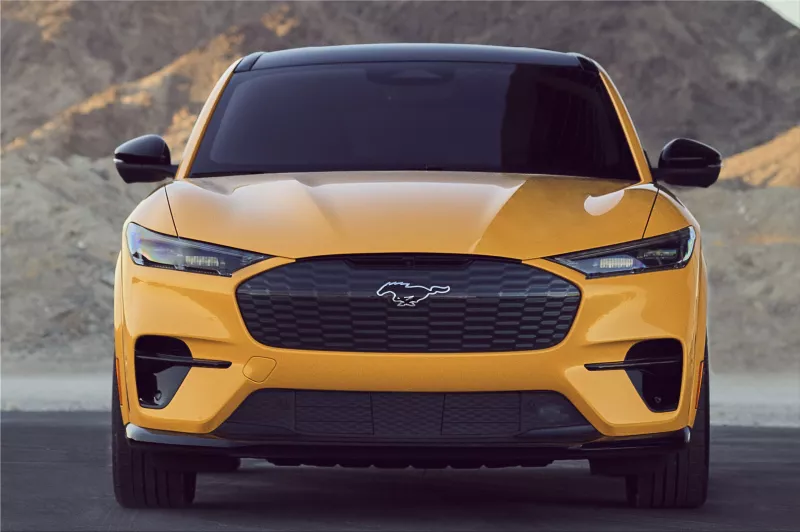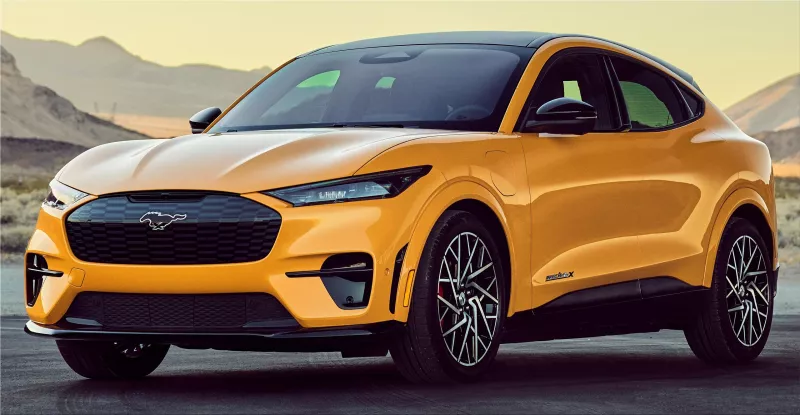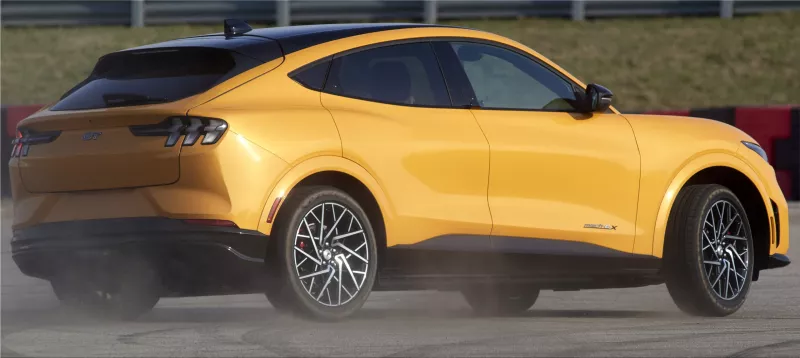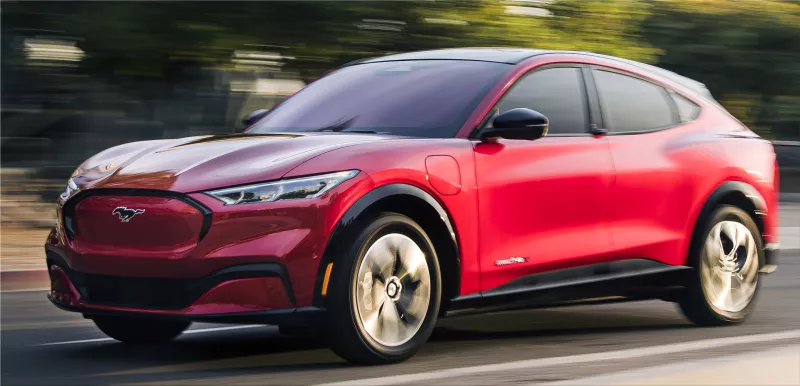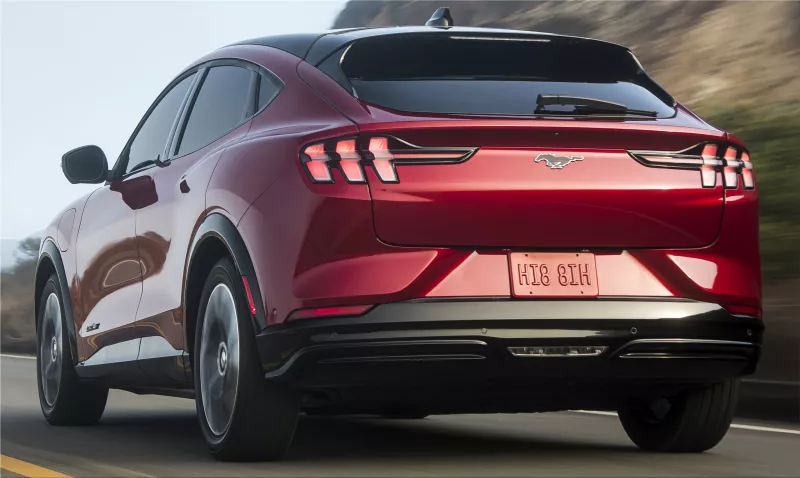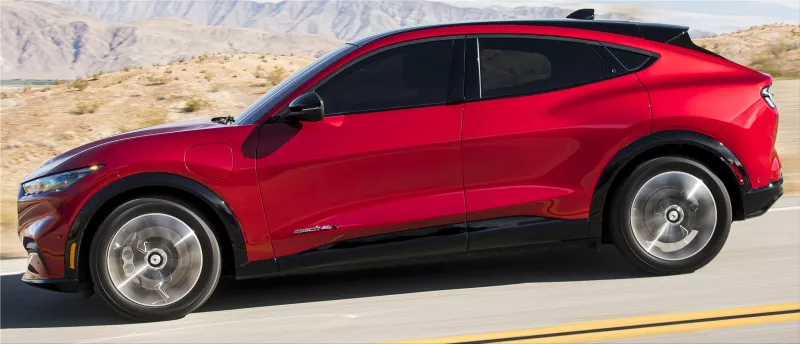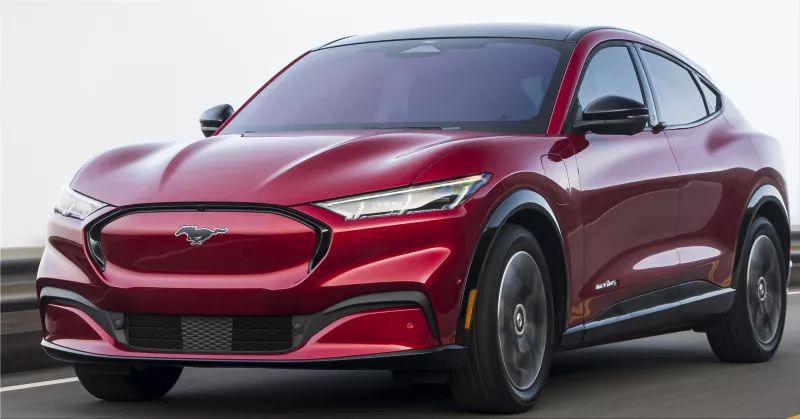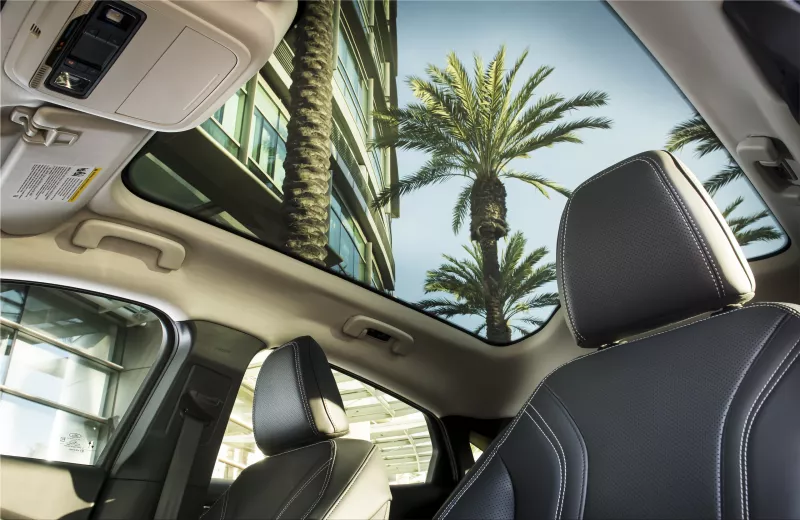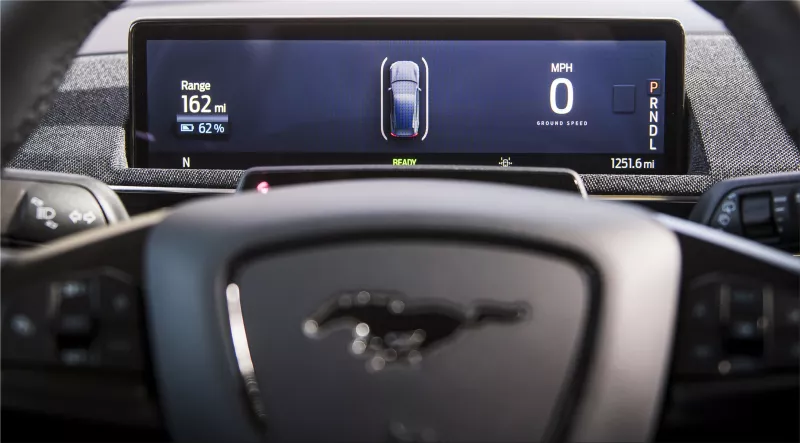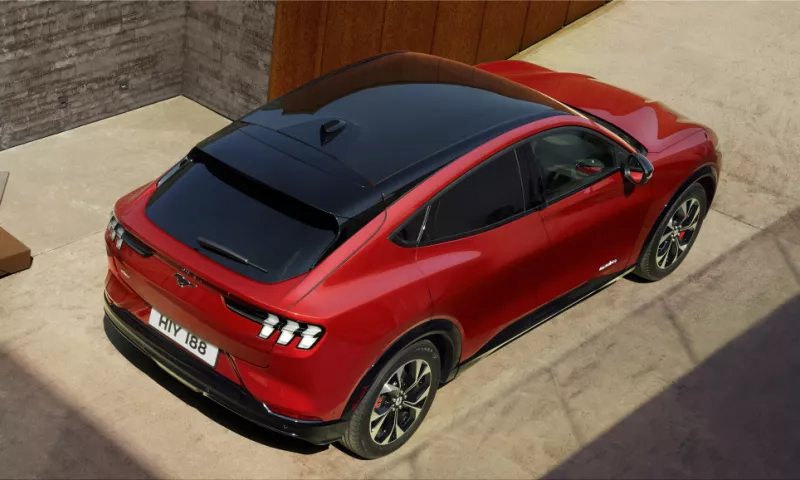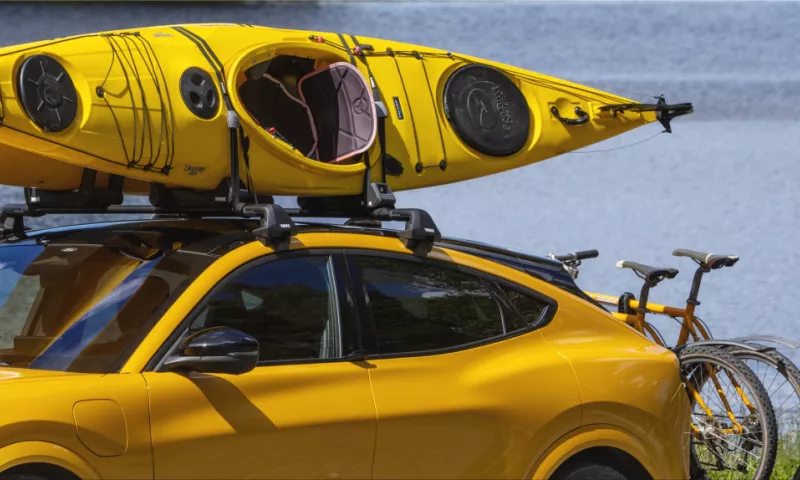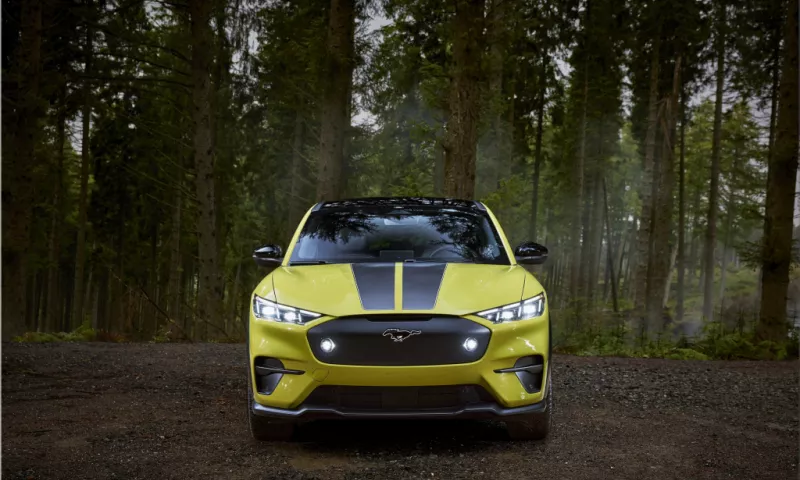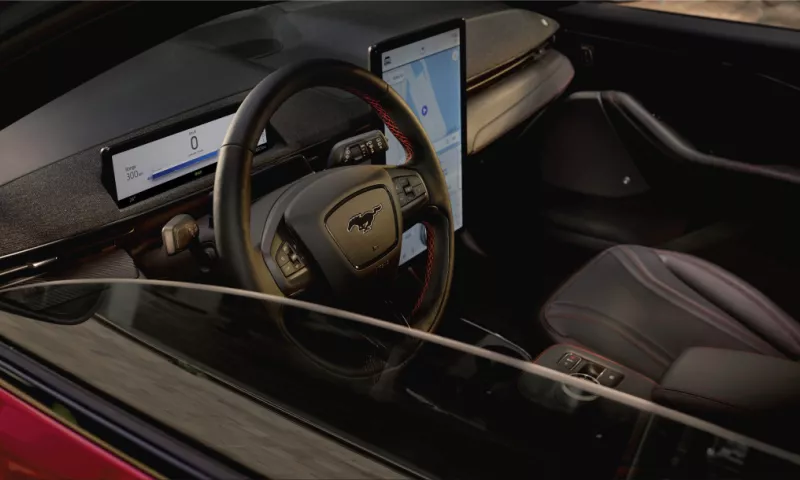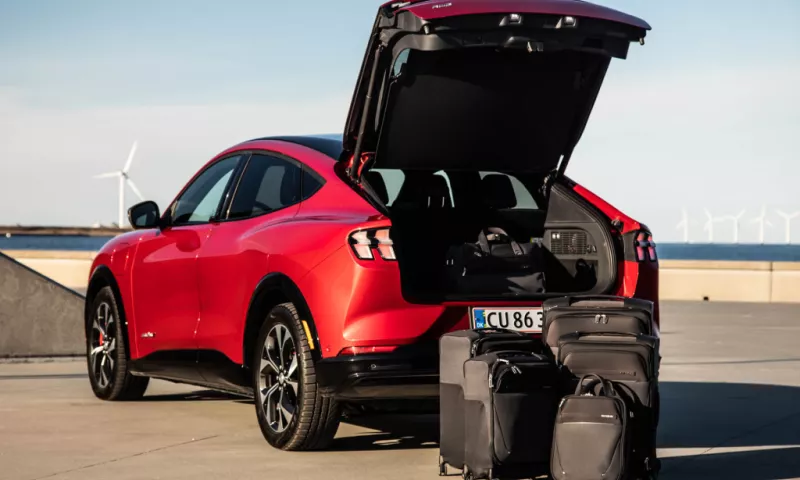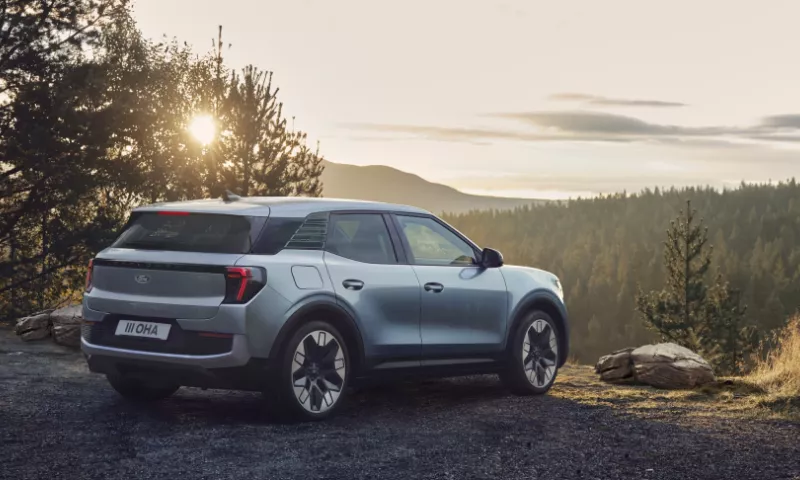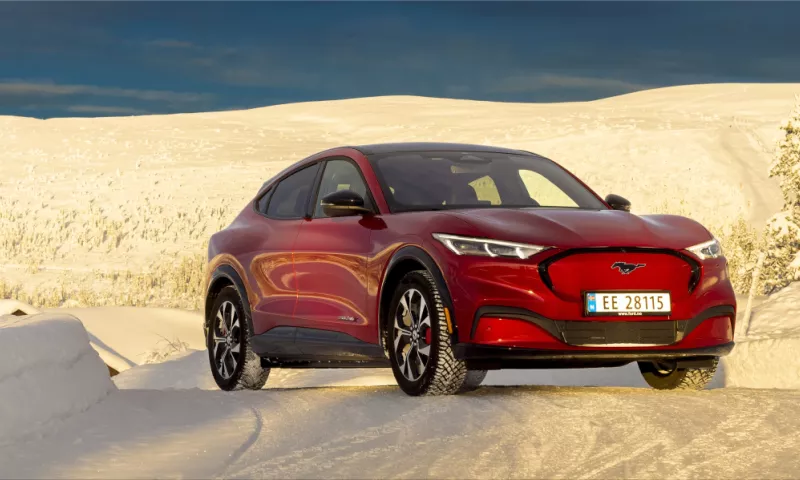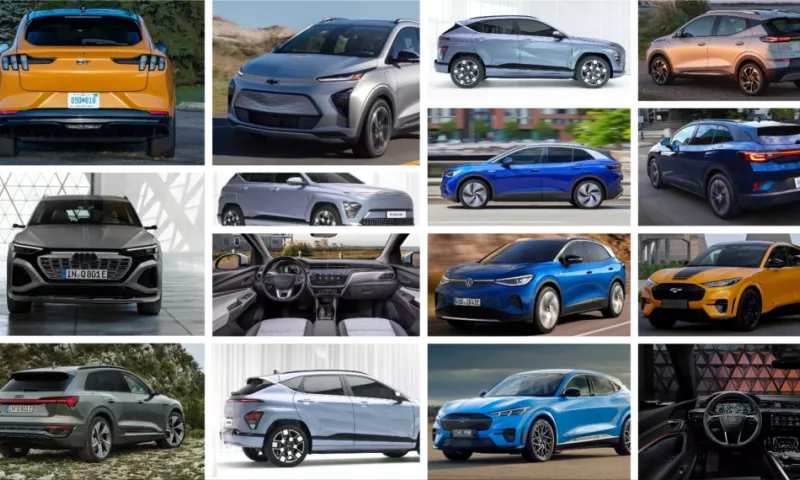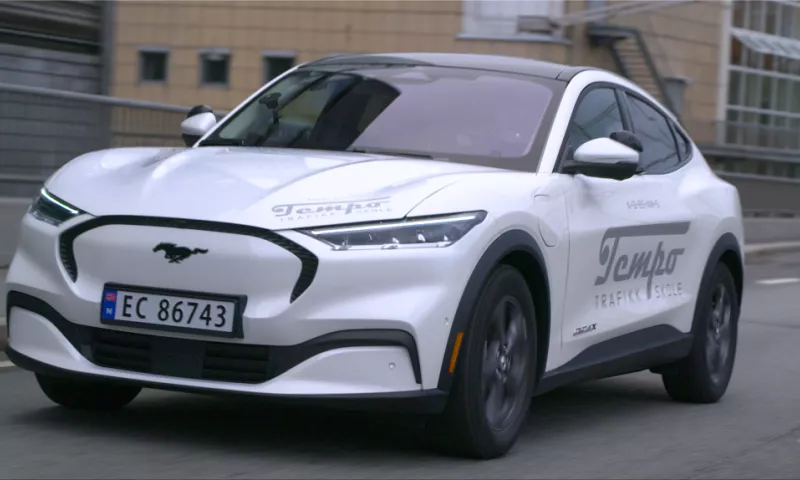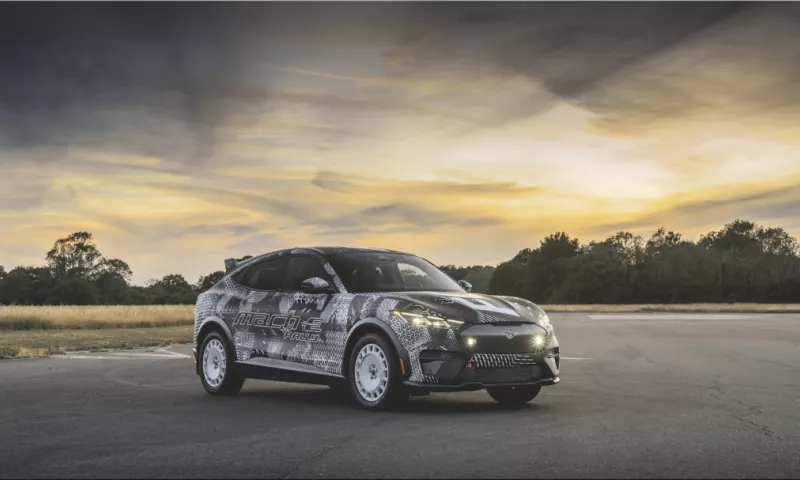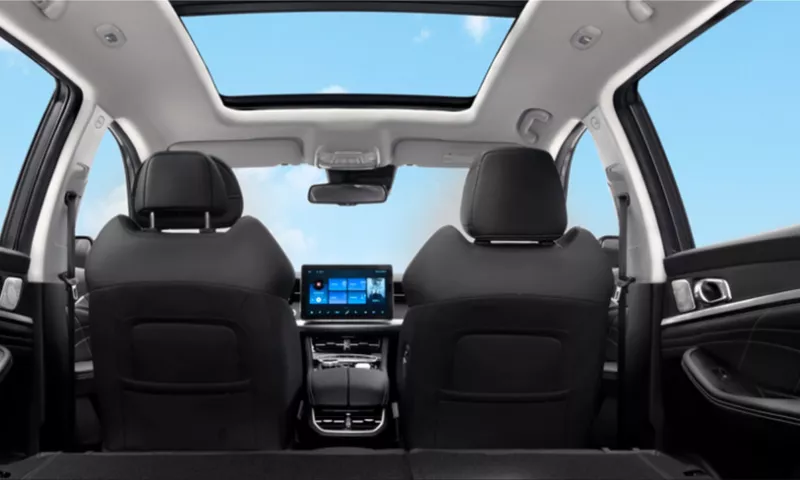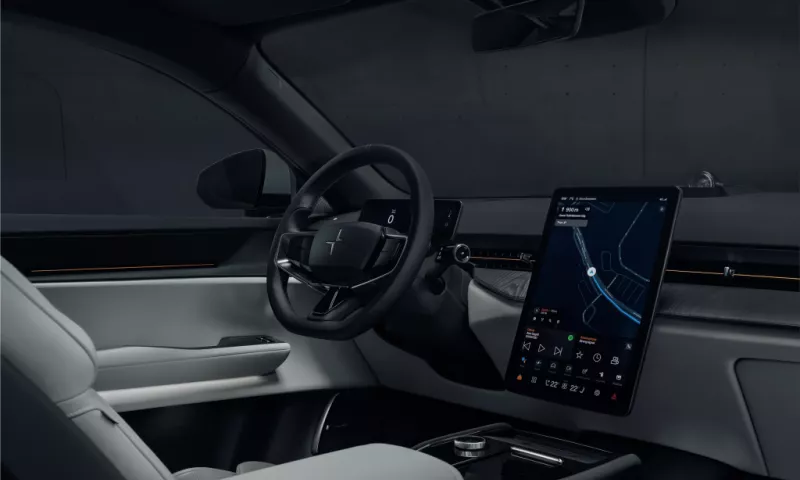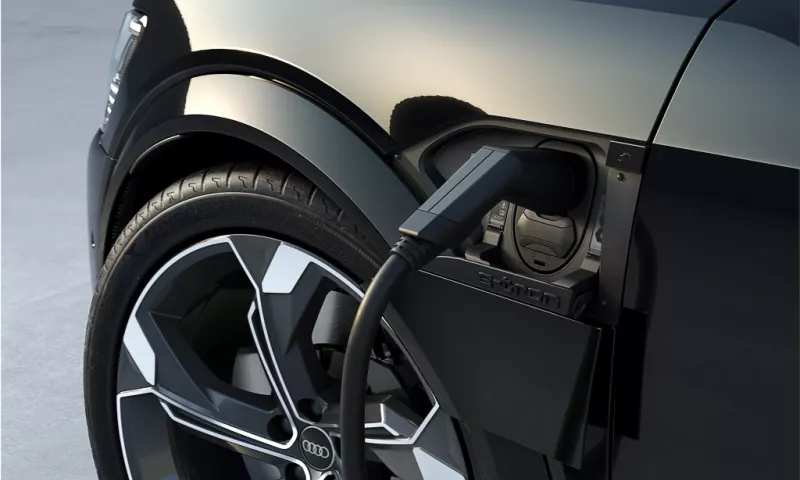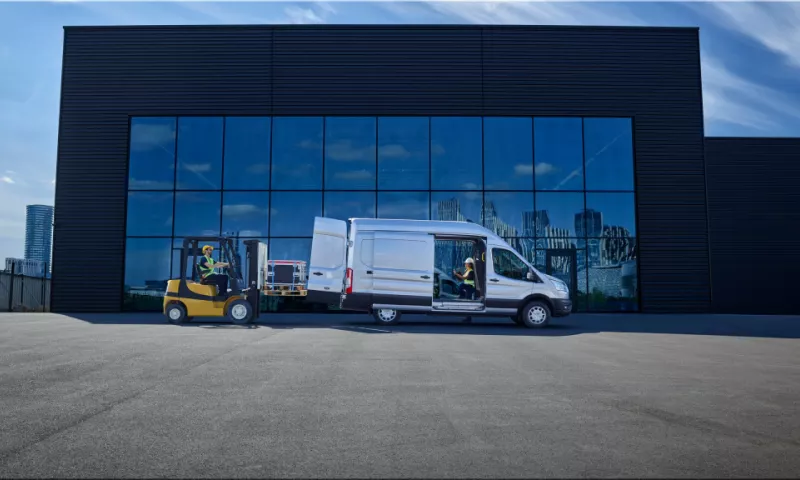Ford revolutionized mobility more than a century ago when it brought the horseless carriage to the masses. Breaking the mold of the internal combustion engine (ICE) with its first expansion of the Mustang line in 56 years, the automaker aims to ride the wave of transformation toward electrification. Gone is the throaty growl of the V8 ICE engine and, in its wake, a brand-redefining luxury ride that's smooth and quiet, a hallmark of the electric motor, with a performance worthy of the Mustang logo. Plus, the next-generation Ford Sync infotainment system shows how far the company has come in its connected car capabilities. Ford isn't a one-trick pony, and the 2021 Ford Mustang Mach-E proves it, winning the Editors' Choice award.
Available in five versions: Select, California Route 1, Premium, GT, and First Edition, the Ford Mustang Mach-E offers various battery and electric motor configurations. All trim levels have an 88 kWh battery pack and two electric motors to all four wheels.
All also come with a 120-volt or 240-volt portable charging cord and DC fast-charging capability. The DC fast charger maxes out at 150 kilowatts and increases 52 miles of range in 10 minutes. For example, we tested the Ford Mustang Mach-E Premium can charge your battery from 10% to 80% in 45 minutes.
Ford's charging network of 13,500 third-party stations is accessible via the company's app. When the payment information is preloaded in the app, the car begins charging seconds after plugging in at stations that support the Plug & Charge protocol. The bundled Ford Mobile Charger may offer an estimated average range of 20 miles per hour of charging on a 240V outlet. Furthermore, Ford has collaborated with Amazon to provide in-home installation by a professional electrician.
Cargo aside, the 2021 Ford Mustang Mach-E comes standard with 18-inch wheels, keyless entry and ignition with access to a smartphone, an auto-dimming rearview mirror, a power-adjustable driver's seat, a rear seat folding with 60/40 split and simulated leather upholstery. Standard technology includes a digital instrument panel, 15.5-inch touchscreen with Ford's next-generation Sync 4A infotainment interface, wireless Android Auto and Apple CarPlay, remote navigation, monitoring, and control via a smartphone app, wireless charging for smartphones, and a six-speaker audio system. In addition, Ford's Co-Pilot360 suite of advanced safety features comes standard on all models.

